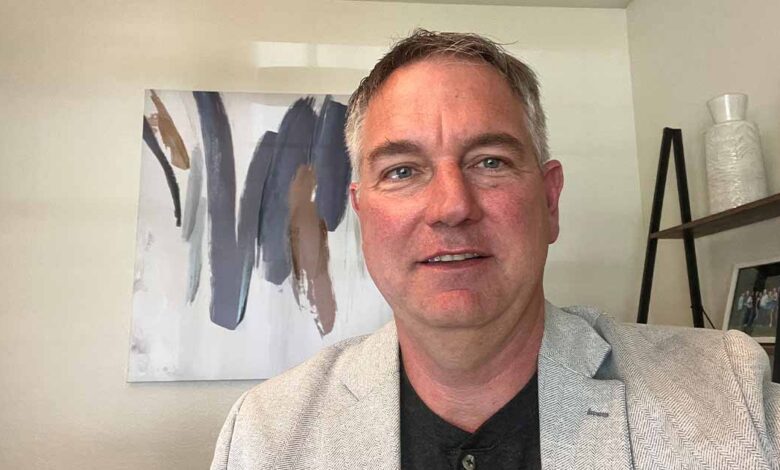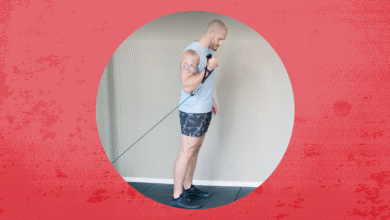OSF deploys care transition program, reduces readmission rate from 29% to 9%

OSF HealthCare, a health system that serves Illinois and Michigan, had a big challenge: Managing the high rate of patient readmissions from hospitals to skilled nursing facilities and eventually to home care.
THE PROBLEM
This issue stemmed largely from gaps in continuous care during transitions between these settings. Patients discharged from hospitals often were readmitted due to complications that could have been prevented with better monitoring and more proactive management, said Matt Nieukirk, director of the SNF practice at OSF HealthCare.
“The existing systems were fragmented, with each care setting operating in a silo,” he explained. “This lack of integration led to incomplete information being passed along at each stage of patient transfer, resulting in suboptimal post-discharge care.
“Furthermore, without this monitoring, there was a significant delay in recognizing and responding to deteriorating patient conditions, which often culminated in emergency readmissions,” he continued. “These readmissions were not only costly but also indicated a failure to provide adequate care, impacting patient outcomes adversely.”
And the manual methods of tracking patient progress were labor-intensive and prone to human error, he added.
“Care teams often struggled with outdated information, which hindered their ability to make informed decisions quickly,” he noted. “This inefficiency in the flow of information and lack of timely data compounded the challenge of effectively managing patient care post-discharge.
“Recognizing these issues it became clear a change was necessary – the adoption of a comprehensive care model, supported by advanced technologies, was envisioned to bridge these gaps,” he said. “This approach aimed to create a seamless flow of real-time data across all care settings, enhance the accuracy of patient health monitoring, and enable proactive care management to prevent avoidable readmissions.”
PROPOSAL
OSF HealthCare recognized the urgent need to address the continuity of care for patients transitioning from its hospitals to skilled nursing facilities and ultimately to their homes. The approach, therefore, centered on the integration of physiatry, care coordination, patient monitoring, patient tracking, and reporting technologies to bridge the gaps in care that typically occur during these transitions, Nieukirk said.
“We began by deepening our collaborations with SNFs within our network, recognizing the traditional model of care often left us with limited visibility into a patient’s condition once they left the hospital setting,” he explained. “These partnerships focused on enhancing SNF capabilities to manage high-risk patients effectively, which was crucial given the often complex needs of these individuals.
“In tackling the issue of high readmission rates, we introduced a physiatry-led model within the SNFs with a partnered group,” he continued. “This model places a physiatrist at the center of the care coordination team, tasked specifically with evaluating patients deemed at high risk of readmission. This role is pivotal, ensuring these patients receive the focused medical attention they need during their SNF stay.”
To support this model, OSF HealthCare implemented virtual care management and patient monitoring systems that allow staff to track critical health data in real time. When potential issues are detected, such as a decrease in patient mobility or other warning signs of exacerbation, the teams can intervene promptly, often before the situation escalates to a point requiring hospital readmission.
“Following a patient’s SNF stay, our partnered care management teams continue to engage with patients through a structured 90-day post-discharge period,” Nieukirk said. “During this time, they conduct regular check-ins and use disease-specific assessments to monitor patient progress and quickly address any emerging health concerns. This continuous engagement helps to maintain the stability of patients’ conditions and prevent readmissions.
“All interventions and patient outcomes are thoroughly tracked and analyzed,” he added. “This data is not only vital for ongoing patient care management but also serves as a cornerstone of our continuous improvement efforts. Regular reviews with our healthcare partners ensure everyone involved – from hospital staff to SNF teams – is aligned and informed on best practices and patient outcomes.”
By implementing these strategies, OSF HealthCare aims not just to reduce readmissions but to fundamentally enhance the overall quality of care across the health system.
“This integrated, technology-enhanced approach has not only proven effective but has also set a new standard for how care transitions should be managed to achieve the best possible patient outcomes,” Nieukirk said.
MEETING THE CHALLENGE
In addressing the challenge of managing care transitions from hospital to skilled nursing facilities to home care, the health system implemented a comprehensive patient monitoring, patient tracking and reporting system. This system is designed to ensure every patient receives continuous, high-quality care as they move through different stages of recovery and care environments.
“The core users of this system and program include transitional care managers, SNF staff and home health teams,” Nieukirk explained. “Patients discharged from the hospital and at risk of readmission are equipped with a virtual care manager and high-risk patients are provided devices that monitor vital signs, movement and other health metrics critical to their specific conditions.
“These devices are essential for patients with chronic conditions or those recovering from surgery or acute illness,” he added. “Our partner, Puzzle Healthcare, and its care management and post-discharge monitoring program are integrated with advanced health information systems that bridge data across all care settings and all inputs are plugged directly into PointClickCare and Matrix at the SNF level, and into Epic at the health system level.”
From a workflow perspective, once a patient is discharged and enters an SNF or returns home, the system continuously sends health data to OSF HealthCare regularly. Care managers and SNF staff are alerted in real time to any abnormalities or potential issues. This allows for immediate intervention, which can range from adjusting medication to scheduling an urgent follow-up visit, thus preventing potential emergencies and readmissions.
“Proactive patient management technology enables us to not just react to critical health events, but to anticipate and prevent them,” Nieukirk said. “For example, predictive analytics are used to assess risks and suggest preventive measures before health conditions deteriorate. This proactive approach is crucial in ensuring patients do not just survive but thrive in their recovery journey.
“Finally, the reporting capabilities of our systems provide detailed insights into patient outcomes, staff efficiency and overall program effectiveness,” he continued. “These reports help us understand trends, identify areas for improvement, and ensure that resources are allocated appropriately to maximize care delivery.”
Through this sophisticated integration of monitoring, patient tracking and reporting technologies, the health system has established a model of care that not only addresses immediate health concerns but also fosters long-term wellness and reduces the overall burden on the health system, he added.
RESULTS
OSF HealthCare’s implementation of this technology has yielded significant, measurable improvements in patient outcomes and operational efficiencies. Nieukirk offers some examples of the success:
-
Reduction in readmission rates. One of the most impactful results has been the substantial reduction in hospital readmission rates. Historically, the health system’s readmission rates hovered around 29% when a patient was admitted to one of the partner nursing homes, and this number has since decreased to below 9% across all patients discharged from the facility and followed for 90 days post-discharge. This improvement Nieukirk primarily attributes to the partnered virtual care management team at Puzzle Healthcare, which actively monitors patients after they leave the hospital.
-
Enhanced patient follow-up and engagement. Another significant achievement through the use of these technologies is the enhancement of patient follow-up and engagement. By integrating patient tracking and reporting tools, the health system has been able to monitor more than one thousand patients in skilled nursing facilities and post-discharge. This extensive coverage ensures the most critical patients are seen two to four times per week during the SNF stay, focusing on their care continuity and adherence to treatment plans.
-
Overall impact on healthcare delivery. These technologies have not only improved individual patient outcomes but have also transformed the health system’s approach to healthcare delivery. By leveraging real-time data and continuous monitoring, it has shifted from reactive healthcare practices to a more proactive and preventive model. This shift not only ensures better health outcomes for patients but also enhances the operational efficiency of healthcare providers.
ADVICE FOR OTHERS
For healthcare organizations considering integrating advanced systems to manage and reduce patient readmissions effectively, Nieukirk offers several key pieces of advice based on his experience in enhancing care transitions from hospital to SNF to home:
-
Assess and understand needs. Start by conducting a thorough assessment of current readmission rates and identify the key factors contributing to these readmissions. Understand the specific needs of the patient population and the gaps in existing care transition processes.
-
Choose the right vendors. Select technologies that can integrate with existing systems and support real-time data sharing across all care settings. Look for vendors that understand the healthcare landscape and can provide insights into best practices for reducing readmissions. The right vendor should help set up a comprehensive system that tracks patients throughout their care journey, from hospital to SNF to home.
-
Implement with an eye on scalability and flexibility. Ensure the systems implemented are scalable and can adapt to changing healthcare needs and regulations. This flexibility will allow expansion or adjustment of the program as one scales or as patient needs evolve over time.
-
Monitor, evaluate and iterate. Continuous monitoring and evaluation of the system’s impact on readmission rates and other key performance indicators are crucial. Use the data collected to regularly review and refine the approach.
-
Foster collaborative relationships. Encourage ongoing collaboration between all parties involved in patient care, including hospital staff, SNF teams and home care providers. This collaborative approach ensures everyone is aligned on the goals of reducing readmissions and improving patient care, and it maximizes the impact of technological interventions.
-
Focus on patient-centric outcomes. Ultimately, the goal of implementing any new systems should be to improve patient health outcomes. Always keep the patient at the center of integration efforts, ensuring the technologies implemented enhance the patient experience and lead to better health outcomes.
“Through the use of this system, we have not only achieved specific metrics such as reduced readmission rates and improved patient follow-up but have also set a new standard in healthcare that emphasizes proactive, data-driven and patient-centric care,” said Nieukirk.
Follow Bill’s HIT coverage on LinkedIn: Bill Siwicki
Email him: [email protected]
Healthcare IT News is a HIMSS Media publication.



